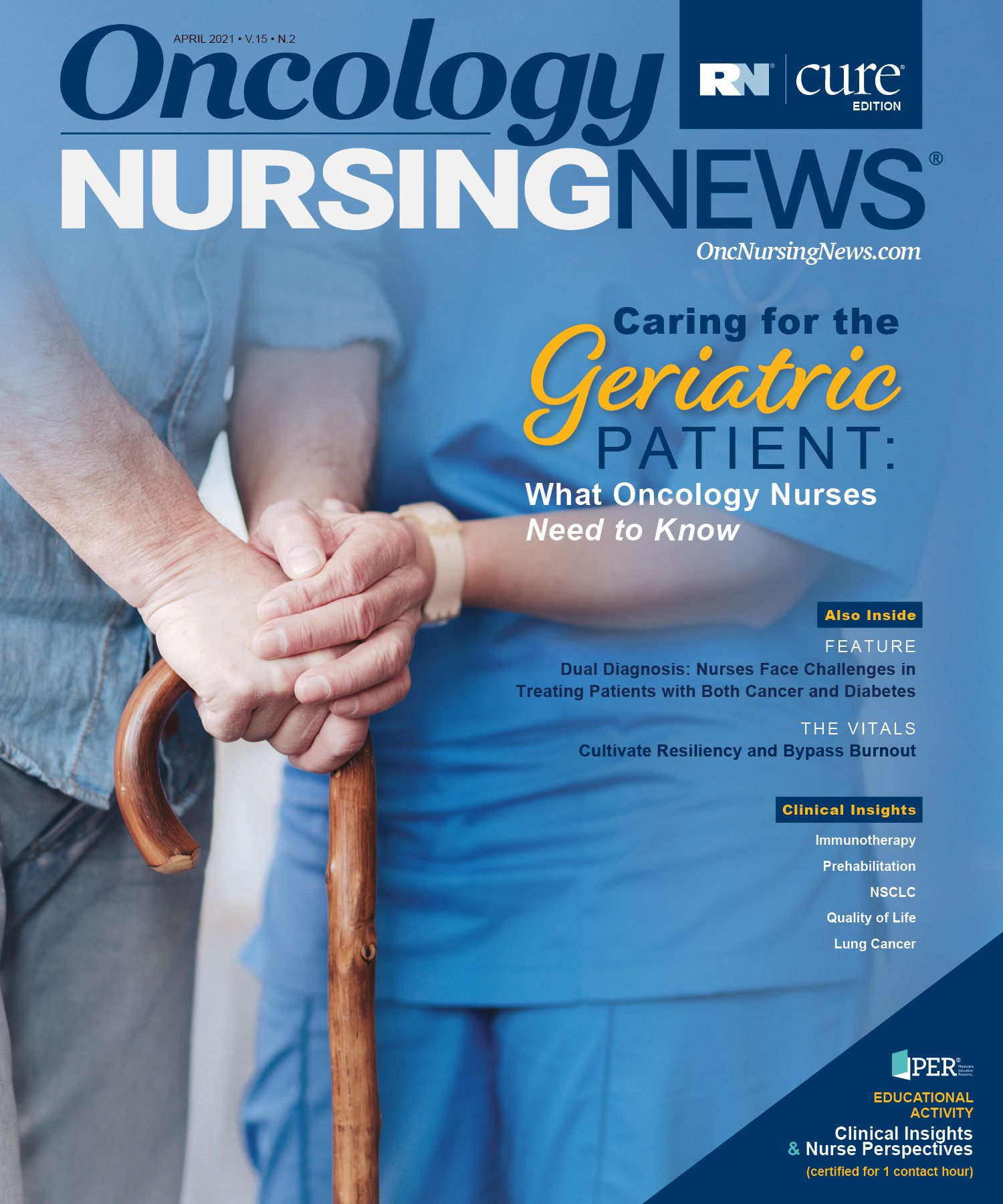Using Digital Technology to Care for Patients
Digital health should be of special interest to oncology nurses, as monitoring and interventions for symptoms are the pillar of cancer care.
Long before COVID-19, health care digital technology was here to stay. The pandemic has accelerated the need for and use of this technology, particularly in remote care settings.
More than 4.57 billion people now use the internet—that is close to 60% of the world’s population, with many going online via mobile technology, like smartphones. As of July 2020, there were 5.15 billion unique mobile phone users in the world, and that number is growing at a rate of 2.4% per year worldwide. Smartphone use is growing with an average of more than 1 million new such devices activating every day.1 We need to tap into this large resource with thoughtful, evidence-based approaches to cancer care.
A study in the United States showed that the pandemic caused a massive acceleration in the use of telehealth. Prior to COVID-19, only 11% of US patients used telehealth. Then, when fear of infection and stay-at-home orders canceled many clinician visits, the use of telehealth leaped to 46%.2 This is a great opportunity for nurses to jump on the telehealth movement.
The other advancement pushing the digital revolution in health care is the wearables. The use of Fitbit, Apple Watch, and other devices has grown immensely popular. The number of connected wearables will continue to rise to 1.1 billion, up from 216 million reported in 2016.3 What a great opportunity for health tracking and healthy interventions around the world.
Digital health technology should be of special interest to oncology nurses because monitoring and interventions for symptoms are the pillar of cancer care. Using digital health technology would allow for timely assessment and planning by the patient’s health care team. Managing symptoms effectively allows the patient to continue treatment and have good quality of life. A review of 66 studies found that digital health benefits patients regarding symptom reporting, management, reduction in symptom distress, decrease in unplanned hospitalizations, improved quality of life, and survival.4 Another study found that patients with cancer think that telemedicine is convenient and acceptable.5 What are we waiting for?
Investigators recently reviewed several patient in-home monitoring digital tools. The first tool reviewed was the Symptom Care at Home system, which tracks 11 common symptoms in patients undergoing chemotherapy. The tool provides immediate feedback for self-management and notifies providers of symptoms that exceed preset thresholds. This system showed a 43% reduction in symptom burden severity over usual symptom care.6
The second in-home monitoring system reviewed was the Symptom Tracking and Reporting tool. The tool gathers information from 12 commonly experienced cancer symptoms and alerts nurses when symptoms worsen by 1 to 2 points or reach grade 3 or higher. The tool has been shown to improve health-related quality of life and reduced emergency department visits by oncology patients undergoing treatment.7
The third tool was the Advanced Symptom Monitoring System (ASyMS). The tool was developed in Europe and has international use. ASyMS is a mobile phone–based tool that can monitor toxicities from chemotherapy during the treatment phase of care. The testing of ASyMS found a decrease in severity of fatigue and will be further studied in 5 European clinical trials.
In addition to these tools that track and address symptom management during treatment for cancer, other tools have been developed that address end-of-life (EOL) care. Tools are available that can monitor and track patient symptoms, caregiver distress, and overall EOL care for patients and families.
Moving forward with implementation of digital oncology tools should be done with careful consideration and with oncology nursing care standards as a basis for an effective tool, but let us not miss this opportunity. Digital health has unlimited possibilities in cancer care, and oncology nurses are at the forefront to assure this initiative is successful for patients and health care workers. Oncology nurses, this is a great opportunity. Let’s jump on it.
References
1. Kaye R, Rosen-Zvi M, Ron R. Digitally-enabled remote care for cancer patients: here to stay. Semin Oncol Nurs. 2020;36(6):151091. doi:10.1016/j.soncn.2020.151091
2. Bestsennyy O, Gilbert G, Harris A, Rost J. Telehealth: a quarter-trillion-dollar post-COVID-19 reality? McKinsey & Company. May 29, 2020. Accessed March 12, 2021. https://www.mckinsey.com/industries/healthcare-systems-and-services/our-insights/telehealth-a-quarter-trillion-dollar-post-covid-19-reality
3. Holst A. Wearable technology—statistics & facts. Statista. March 9, 2020. https://www.statista.com/topics/1556/wearable-technology Accessed March 15, 2021.
4. Aapro M, Bossi P, Dasari A, et al. Digital health for optimal supportive care in oncology: benefits, limits, and future perspectives. Support Care Cancer. 2020;28(10):4589-4612. doi:10.1007/s00520-020-05539-1
5. Liptrott S, Bee P, Lovell K. Acceptability of telephone support as perceived by patients with cancer: a systematic review. Eur J Cancer Care (Engl). 2018;27(1). doi:10.1111/ecc.12643
6. Wilson CM, Mooney K. Advancing oncology nursing practice through the adoption of patient monitoring digital tools. Semin Oncol Nurs. 2020:36(6):151087. doi:10.1016/j.soncn.2020.151087
7. Basch E, Deal AM, Kris MG, et al. Symptom monitoring with patient-reported outcomes during routine cancer treatment: a randomized controlled trial. J Clin Oncol. 2016;34(6):557-565. doi:10.1200/JCO.2015.63.0830
Innovative Program Reduces Nurse Turnover and Fosters Development
Published: September 12th 2024 | Updated: September 12th 2024The US Oncology Network (The Network) has developed one of the most comprehensive programs in the nation to support the professional development and retention of new oncology nurses.



